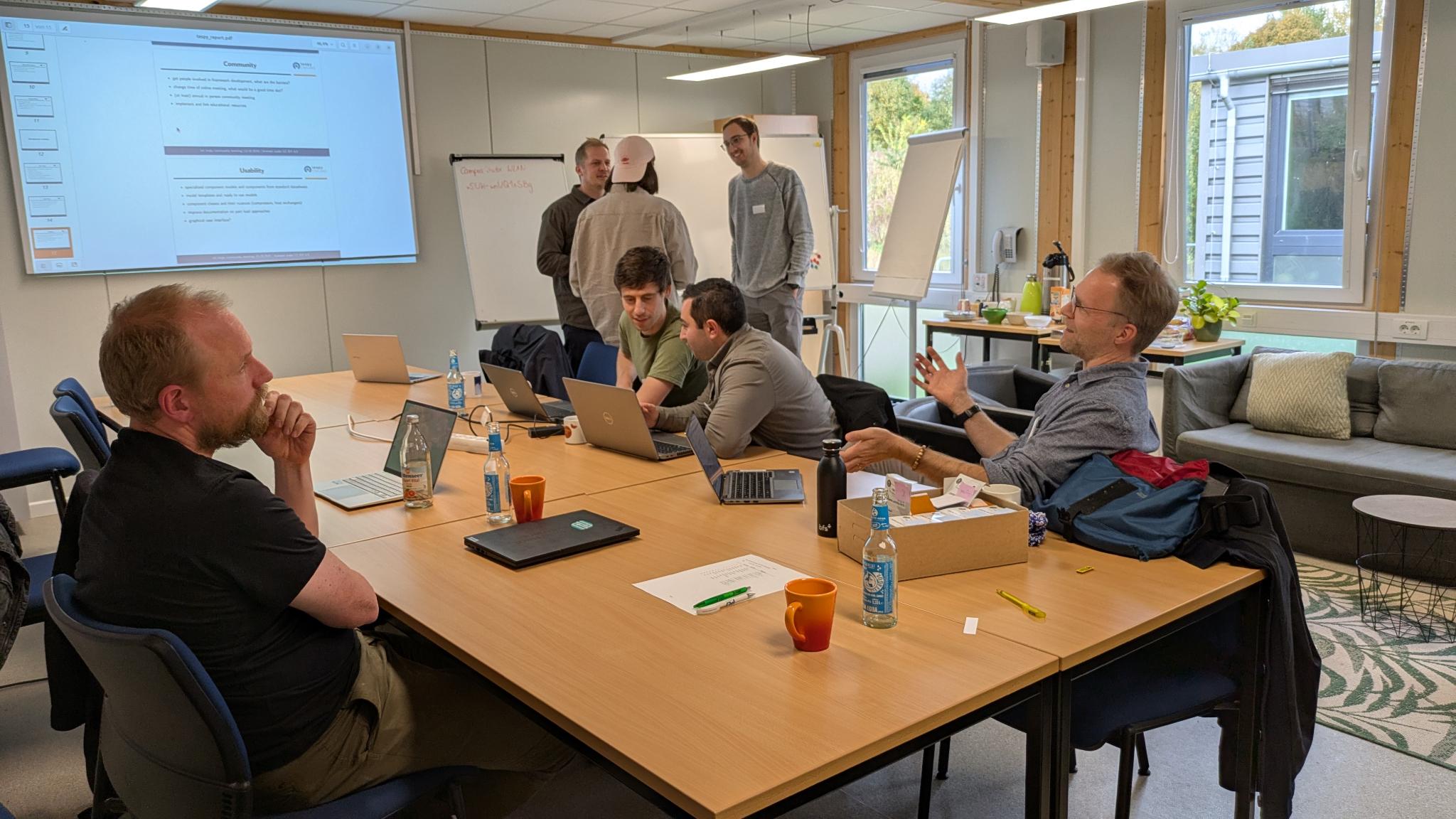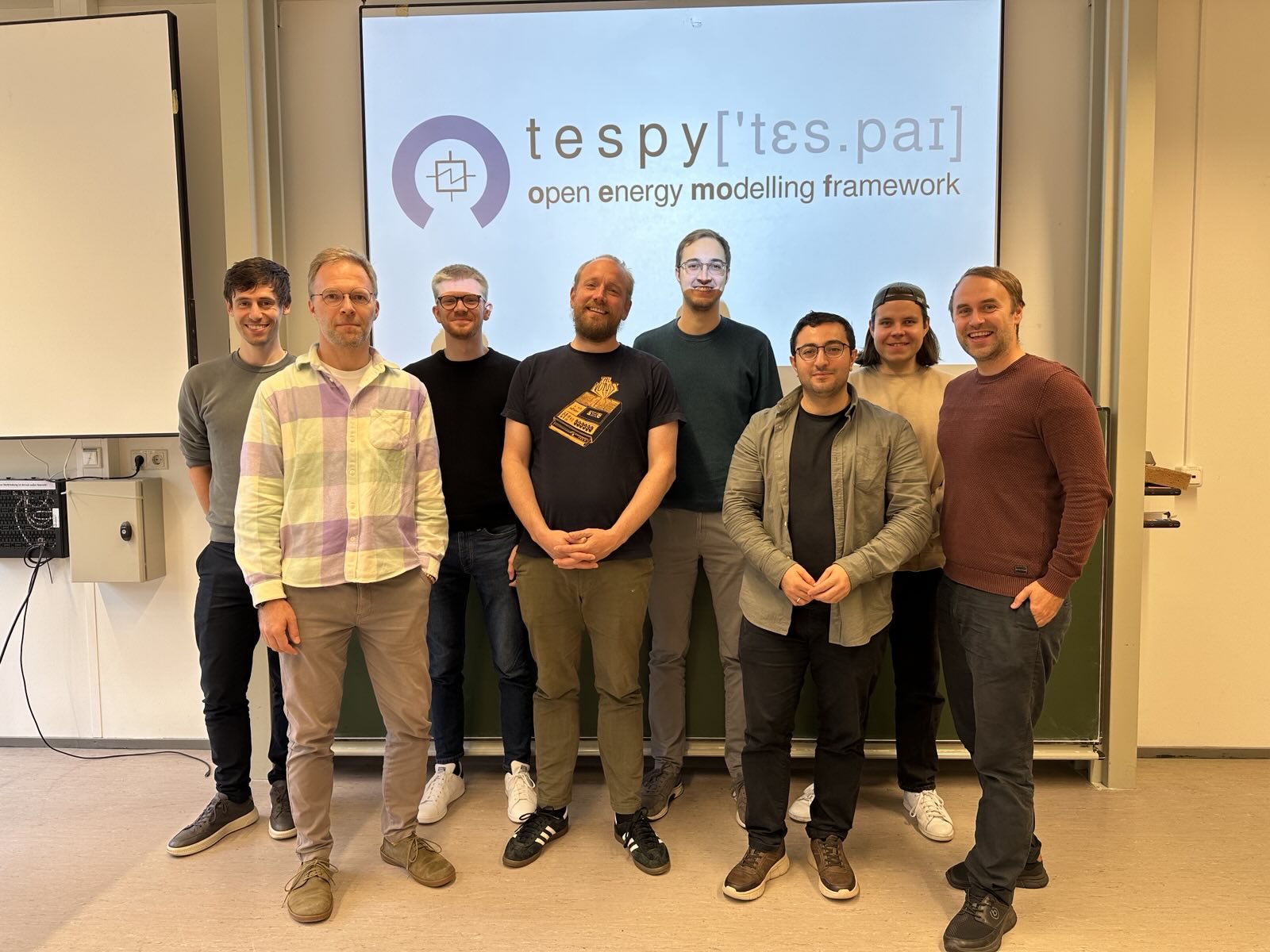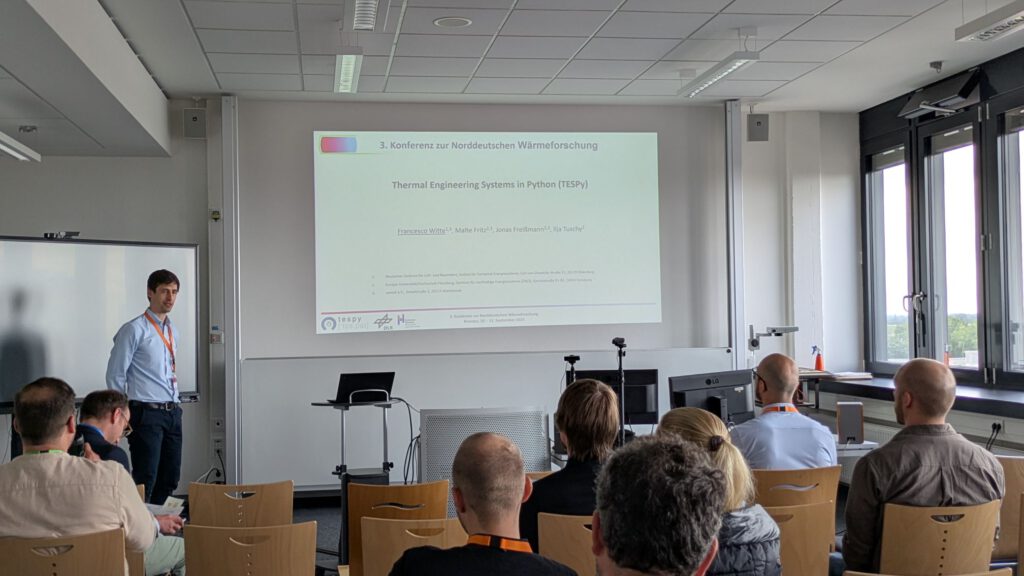TESPy has been part of the oemof organization for about eight years. While it has always been represented at the meetings, it was time for the first ever TESPy community meeting!

Last week around ten of us got together at the University of Applied Sciences in Flensburg to discuss where TESPy is headed and how we can make open source thermodynamics even better. The discussions covered a broad range of topics:
- A review of the most recent feature additions
- Beginner tutorials
- Debugging with tespy version 0.9
- Custom equations into your model
- Implementation of new components
- Showcases of how the software is used
- Strategies for the operation of large scale heat pumps
During the hackathon an addition to a component was not only drafted on paper but actually implemented in the framework. And, it has already
made it to the latest release of TESPy.
It was really inspiring to meet others working with the software, exchange ideas, and see how the community is growing. Thanks to everyone who took their time to come to Flensburg to join the meeting.

Looking forward to the next one!

